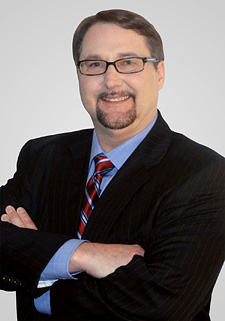Cable-Tec Focuses On IP, Energy, Home Networking

ATLANTA—For an event that historically focused on field engineering, this month’s Cable-Tec Expo has expanded its emphasis to encompass Internet Protocol delivery, energy management and home networking. The Society of Cable Telecommunications Engineers, which runs the annual conference and exhibition, says that the new sectors—and a vastly expanded speaker lineup—reflect the changing demands of the cable engineering community.
“We’re going after two distinct but correlated audiences,” explains Daniel Howard, SCTE’s senior vice president-engineering and Chief Technology Officer, who oversees the Cable-Tec Expo program. He describes the attendees as “RF engineers who have come up through the access networks” and a new breed of “computer and IP [Internet Protocol] engineers who have to realize that [cable] access networks offer different opportunities… than the purely IP networks.”
About 9,000 attendees (equal to last year’s crowd) and 400 exhibitors (also comparable to 2010) are expected at SCTE’s premier event, Nov. 15-17 at the Georgia World Congress Center in Atlanta. A full-day “pre-workshop” on Monday, Nov. 14 will be highlighted by a “Capacity Management Symposium” concentrating on “best practices” for managing cable networks.

Daniel Howard “This topic was driven by the MSOs [Multiple System Operators] who said they want their engineers to learn about capacity management,” Howard said. For the first time, SCTE will offer a live Webcast of sessions, making the symposium content available (for a fee) to engineers who cannot come to Atlanta for the lessons.
MANAGING BANDWIDTH
The emphasis on IP throughout the Cable-Tec Expo program is in response to MSOs’ “making a concerted effort to hire cadres of IP engineers,” according to Howard. He notes that most network transport is now running on IP platforms, and that hurdles for managing traffic growth are “not going away anytime soon.” He points out that the industry is now moving toward 1 GHz technology, “driven by more content.”
“All of this stresses the capacity requirements and needs of the network,” he adds, requiring the training to help field engineers handle the tools and bandwidth growth modeling.
This year’s agenda doesn’t have much to say about 3D TV. “It’s still there, but it does not have the hot buzz it had last year,” Howard explains. “We’re putting a lot more emphasis on multiscreen, traffic management and billing requirements. That’s what’s huge.”
Reflecting this growing diversity of cable engineering, Cable-Tec Expo’s agenda features 70 presentations packaged into more than 40 sessions, about three times as many speakers as in previous years. Sessions are clustered into five tracks: Business Services, Engineering, Facilities Management, Plant Operations and Technical Operations.
Top management and technical executives from the cable industry’s largest firms will be on stage in force. The expo opens on Tuesday morning with three high-level sessions, starting with a conversation between Pat Esser, president of Cox Communications, and Sanjay Jha, Chairman and CEO of Motorola Mobility. Google’s pending acquisition of Motorola—and its impact on the cable industry—is likely to be a topic of that conversation.
Immediately following that discussion is a panel featuring CTOs of five large cable operators, who will offer their visions for upcoming development and deployment. The Tuesday morning executive trifecta concludes with an “Industry Partnership Panel” at which top officers of five vendors will explore the “technology-driven opportunities” for the cable industry.
HOME NETWORKS, ENERGY & DIVERSITY
The Cable-Tec Expo agenda delves deeply into home networking, with special attention on “untethered devices,” especially wireless tablets. The “big deal” of multiscreen delivery “is all driven by IP,” says Howard, looking toward cable’s future in “pure IP transport of video.”

Georgia World Congress Center Using the many wireless hotspots on the show floor, attendees will be able to play a “game” to test their knowledge of cable technology. The game will be played on Xoom tablets that Motorola will supply.
Another major SCTE mission is “energy management,” a topic of increasing importance to MSOs trying to lower their electricity consumption. More than a dozen exhibitors will show their wares for promoting energy-efficient technologies and solutions in the SCTE Green Pavilion, which will also showcase SCTE’s “Smart Energy Management Initiative” (SEMI).
SCTE has “dramatically tightened” its relationships with Cable Labs and the National Cable and Telecommunications Association to coordinate energy management projects, Howard said. “We’re in the business of promoting through Expo the technology that comes out of Cable Labs.”
The Cable Labs relationship will also be visible in the Next Generation Video Architecture pavilion on the show floor. Exhibits will include systems that use cable modems as probes in the network to troubleshoot transmission problems.
Another SCTE initiative to reach out to women engineers—Working with Women in Cable Telecommunications (WICT) and the Society of Women Engineers (SWE)—will include sessions that show women engineers that cable is a career alternative. SCTE’s new mentoring program “Women’s Tech Connect” will debut at Expo.
Among the exhibitors are NDS which will demonstrate its Unified Gateway, an end-to-end platform for video/voice/data services from a single access point. Blonder Tongue Laboratories, Inc. will focus on its products for the hotel/hospitality market, enabling cable operators to expand operations in this growing sector. InnoTrans Communications will show its optical transport solutions that allow cable operators to maximize bandwidth capacity over fiber-constrained Hybrid Fiber-Coax networks for both forward and return transport.
To register for SCTE, visit expo.scte.org.
Get the TV Tech Newsletter
The professional video industry's #1 source for news, trends and product and tech information. Sign up below.
Gary Arlen, a contributor to Broadcasting & Cable, NextTV and TV Tech, is known for his visionary insights into the convergence of media + telecom + content + technology. His perspectives on public/tech policy, marketing and audience measurement have added to the value of his research and analyses of emerging interactive and broadband services. Gary was founder/editor/publisher of Interactivity Report, TeleServices Report and other influential newsletters; he was the long-time “curmudgeon” columnist for Multichannel News as well as a regular contributor to AdMap, Washington Technology and Telecommunications Reports; Gary writes regularly about trends and media/marketing for the Consumer Technology Association's i3 magazine plus several blogs.

